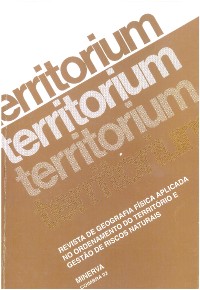Please use this identifier to cite or link to this item:
https://hdl.handle.net/10316.2/40090| Title: | Evolução do troço terminal do rio Lis | Authors: | André, José Nunes Cordeiro, Maria de Fátima Neves |
Keywords: | Lis River;Portugal central;river evolution;environmental problems;Fleuve Lis;Portugal central;évolution hydrographique;environnement;Rio Lis;Portugal central;evolução hidrográfica;ambiente | Issue Date: | 2002 | Publisher: | Associação Portuguesa de Riscos, Prevenção e Segurança | Abstract: | Apresenta-se uma síntese da evolução do sector inferior do rio Lis. Tendo em conta a hipótese de um traçado geral segundo direcção SSE-NNW durante o Plistocénico/Holocénico, passando pela actual praia do Osso da Baleia, a evolução caracterizou-se por uma significativa rotação para Oeste do troço vestibular. Durante os últimos séculos, verificaram-se importantes divagações da embocadura até à sua estabilização artificial, pela construção de diques. O progressivo assoreamento resultou numa drástica redução da navegabilidade. Também se descrevem os principais problemas ambientais. Une synthèse à propos de l'évolution du secteur terminal du fleuve Lis est présentée ici. Si on prend en considération l'hypothèse d'une direction générale SSE-NNW de ce fleuve pendant le Pléistocène/Holocène, en passant par l'actuelle plage de Osso da Baleia (beaucoup plus au Nord), l'évolution a été caractérisée par une rotation considérable vers l'Ouest de la section vestibulaire. Pendant les siècles derniers des déplacements très importants de l'embouchure ont été enregistrés jusqu'à sa stabilisation artificielle, à travers endiguement. L'envasement progressif a résulté en une grande réduction de la navigabilité du fleuve. Les principaux problèmes de l'environnement sont aussi décrits. A synthesis concerning the evolution of the lowermost sector of the Lis River is here presented. Taking into account the hypothesis of a general SSE-NNW direction of this river during the Pleistocene/Holocene, reaching the nowadays Osso da Baleia beach, the evolution was characterized by a significant rotation towards West of the vestibular section. During the last centuries very important displacements of the river mouth were recorded until artificial stabilization, through embankment. Progressive silting resulted in a drastic reduction of the river navigability. The main environmental problems are also described |
URI: | https://hdl.handle.net/10316.2/40090 | ISSN: | 0872-8941 1647-7723 (digital) |
DOI: | 10.14195/1647-7723_9_8 | Rights: | open access |
| Appears in Collections: | Territorium |
Files in This Item:
| File | Description | Size | Format | |
|---|---|---|---|---|
| evolucao_do_troco_terminal_do_rio_lis.pdf | 10.25 MB | Adobe PDF |  |
Items in DSpace are protected by copyright, with all rights reserved, unless otherwise indicated.
